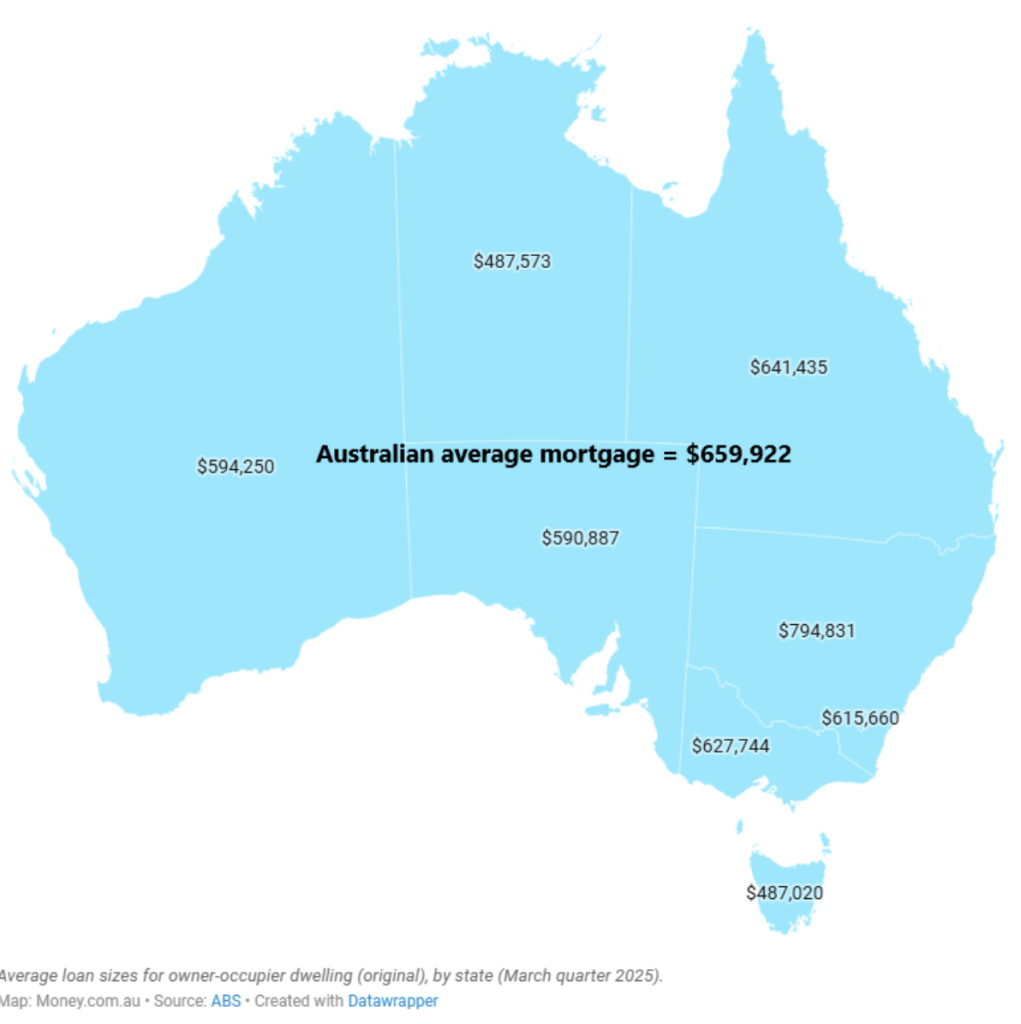Published by
Michael Royal

House prices
The latest Australian Bureau of Statistics release reports a mean national dwelling price of $1,002,500 – the first time the figure has exceeded seven digits.
Here is a graph by State of the median home prices from 2010 to 2022 (courtesy of Christine Theophilos, a Property Strategist with PropertyInvestors.
This graph cuts off a bit earlier than 2025 so the numbers are not quite reflective of the above current position – but the growth is quite staggering, particularly New South Wales.

Home Loans
Sourced from the ABS databank, Money.com.au reports that the average new owner-occupier mortgage is $659,922, with repayments of about $3,957 a month on a 30-year term at 6.00 % p.a.
Luckily this data is a few months old as this ‘average interest rate’ is very high compared to the current best rates (around the mid 5’s).
But “average” hides a lot of wiggle room.
For example, this doesn’t take into account any funds in Offset accounts. As regular readers would know, I am a big fan of properly structured and set up Offset accounts to reduce the interest expense on your loan repayments.
If you need to do a quick audit of your current home loan structure just reach out for a quick chat.
The States Vs the National averages
Best shown graphically – see below.

3 big reasons your home loan could look very different to the average
#1: Lender choice = borrowing power
aka – all lenders are not the same and lenders vary over time
Assessment buffers, debt-to-income caps and allowable living-expense models vary – sometimes by large amounts.
Switching lenders can lift borrowing limits by tens of thousands – which might bridge the gap.
Real story: a new home buyer came to me after they got declined for a $650K loan with a major lender whilst another major lender offered the couple a loan of $900K – an extreme example but it shows what is possible.
#2: Deposit pathways
-
20 %: avoids LMI but takes longer to save.
-
Less than 20% deposit but no LMI if you are in certain professions
-
Less than 20% with LMI but LMI capitalised and paid off with the loan
-
5 % (or less): possible via the Federal Home Guarantee or a family guarantor.
-
Full doc lenders tend to have a greater appetite for lower deposits than lo doc lenders
-
Guarantees, gifts, sale of surplus assets can all be used to increase the value of your deposit.
#3: Product mix & flexibility
About 32,000 Australians refinance each month and one-in-five new loans start as interest-only – proof that rate hunting and structure tweaks can save serious cash.
However, as reported in realestate.com.au, 70% of borrowers are either undecided about refinancing or they are waiting for further rate reductions. Both strategies could be costing them thousands of dollars.
It is a known reality that as with many financial services in loans, telcos and insurance being three of the main culprits, there is often a loyalty tax where the supplier provides a better rate to a new customer, leaving the existing customers on higher rates. Take it as read that you have been warned ‘👋
Average loan sizes


The bottom line
Averages make catchy headlines, not borrowing strategies. The right lender, deposit plan and repayment structure are personal – and that’s where we can help.
Michael Royal is the Founder and Chief Finance Specialist at BIR Finance, helping clients make confident lending decisions with clear, fast insights into their borrowing capacity. With a background as a former accounting firm partner and registered liquidator, he specialises in strategic finance and refinancing solutions.
